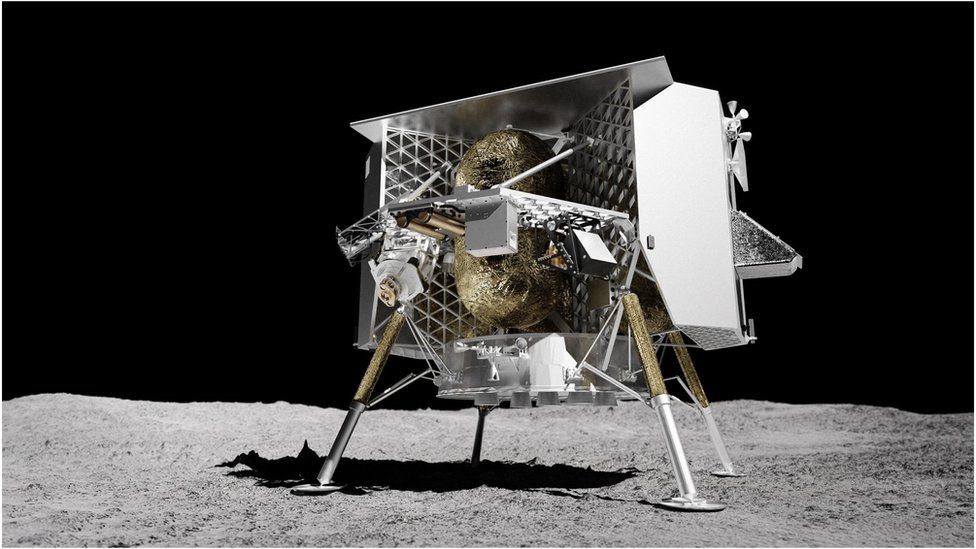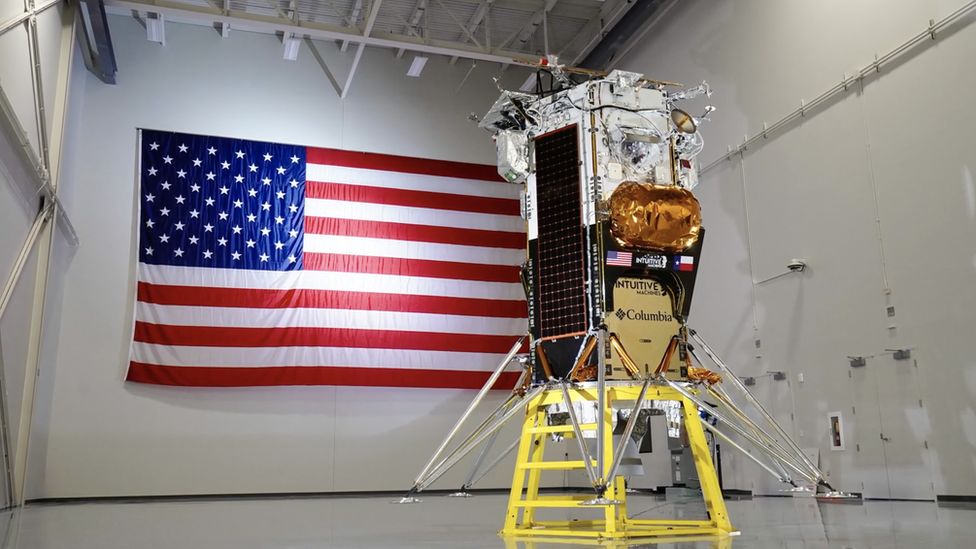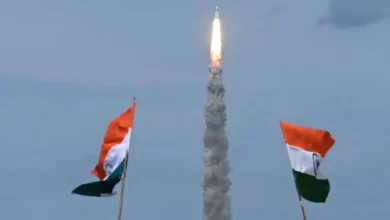Peregrine lander: American Moon mission destroyed over Pacific Ocean

A US spacecraft launched last week to try to land on the Moon has ended its mission in flames over the Pacific.
Peregrine One suffered a propulsion fault that scuppered any prospect of a lunar touch-down and it was commanded to destroy itself instead.
The private operator, Pittsburgh-based Astrobotic, directed the craft into Earth’s atmosphere to burn up.
A tracking station in Canberra, Australia, confirmed loss of signal with Peregrine at 20:59 GMT.
Little or no remains of Peregrine were expected to survive intact to the ocean surface. And even if they did, they should have impacted far away from any population.
Astrobotic’s goal had been to deliver five Nasa instruments to the Moon’s surface, to study the local environment ahead of the return of astronauts later this decade.
Had the Peregrine craft been able to land successfully, it would have become the first American mission in half a century to do so, and the first ever private venture to achieve the feat.
Only government agencies from the US, the Soviet Union, China and India have managed controlled lunar landings to date.
But Astrobotic’s mission was in trouble almost as soon as it came off the top of its launch rocket on Monday 8 January. It can, though, console itself with what it did manage to accomplish in difficult circumstances by continuing to operate Peregrine in space for more than 10 days.

Engineers were able to diagnose what went wrong with Peregrine and then eke out life in the lander far beyond what seemed possible at the start.
“Space exploration is a learning game, especially at this stage and we shouldn’t look at this as a failure; we should look at this as an incredible engineering success,” Sian Cleaver, Airbus’ Orion European Service Module industrial manager, told the BBC’s Today Programme.
“At one point it was looking like this mission was doomed, but a team of engineers and scientists managed to work together and to problem solve and to restore some capabilities of the spacecraft and ultimately direct it back to Earth,” she said. “I think that’s actually pretty impressive.”
“There’s a lot that we can take away from this, but ultimately space travel is difficult and we’re seeing that here.”
The fault was traced to leaking propellant from a ruptured oxidiser tank. This was generating a thrust, turning the craft and preventing it from keeping its solar panels constantly pointed at the Sun – vital to maintain a power supply.
Astrobotic posted a video on social media showing the spacecraft’s view of Earth before it burned up.
The Astrobotic team worked the thrusters on Peregrine to restore stable pointing, but this of course used up even more of the rapidly depleting oxidiser.
Nonetheless, payloads onboard were activated, proving their space-worthiness, and some were even able to gather data, such as on the nature of the radiation environment between Earth and the Moon.
One of the Nasa instruments to be started up – the Peregrine Ion Trap Mass Spectrometer (PITMS) – had its sensor and electronics developed in the UK by the Open University and RAL Space.
The instrument was reported to be performing well in the check-out tests. The technology should have the opportunity to fly again on later lunar missions.

Astrobotic is the first of three US companies to send a lander to the Moon this year under a new private-public partnership with Nasa.
The agency is buying transport services from the Pittsburgh firm and two other commercial ventures – Intuitive Machines and Firefly. Together, the trio had planned six missions to the lunar surface in 2024.
Astrobotic should get a second go in the back half of the year when it tries to land a Nasa rover called Viper. Houston-based Intuitive Machines’ first attempt is likely to launch next month. Its Nova-C craft will be aimed at the lunar south pole.
Before then, the Japanese space agency will try to put down safely close to a near-equatorial impact crater called Shioli. This event is scheduled for 15:20 GMT on Friday.











